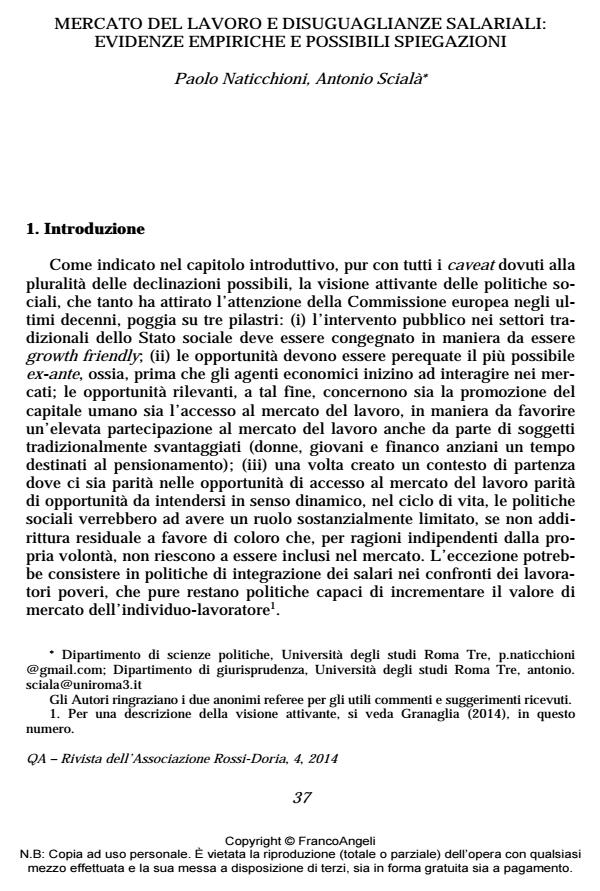Mercato del lavoro e disuguaglianze salariali: evidenze empiriche e possibili spiegazioni
Journal title QA Rivista dell’Associazione Rossi-Doria
Author/s Paolo Naticchioni, Antonio Scialà
Publishing Year 2015 Issue 2014/4
Language Italian Pages 28 P. 37-64 File size 279 KB
DOI 10.3280/QU2014-004003
DOI is like a bar code for intellectual property: to have more infomation
click here
Below, you can see the article first page
If you want to buy this article in PDF format, you can do it, following the instructions to buy download credits

FrancoAngeli is member of Publishers International Linking Association, Inc (PILA), a not-for-profit association which run the CrossRef service enabling links to and from online scholarly content.
Labour Market and Earnings Inequality: Empirical Evidence and Possible Determinants In this paper we evidence the persistent increase in wage dispersion over the past thirty years in many industrialized countries. We then go on to discuss the main determinants of this process identified by the economic literature: (i) the nature of technological change; (ii) deregulation of markets; (iii) globalization; vi) social norms and bargaining power. In addition, on the basis of the recent contributions by Piketty, we turn attention to a dimension of equality typically underestimated in approaches to activating social policy, although crucial for growth and equality of opportunity, i.e. wealth inequality. EconLit Classification: J310, J240, I380
Keywords: Earnings inequality, Social policy, Skill biased technological change, Labour market institutions
Paolo Naticchioni, Antonio Scialà, Mercato del lavoro e disuguaglianze salariali: evidenze empiriche e possibili spiegazioni in "QA Rivista dell’Associazione Rossi-Doria" 4/2014, pp 37-64, DOI: 10.3280/QU2014-004003